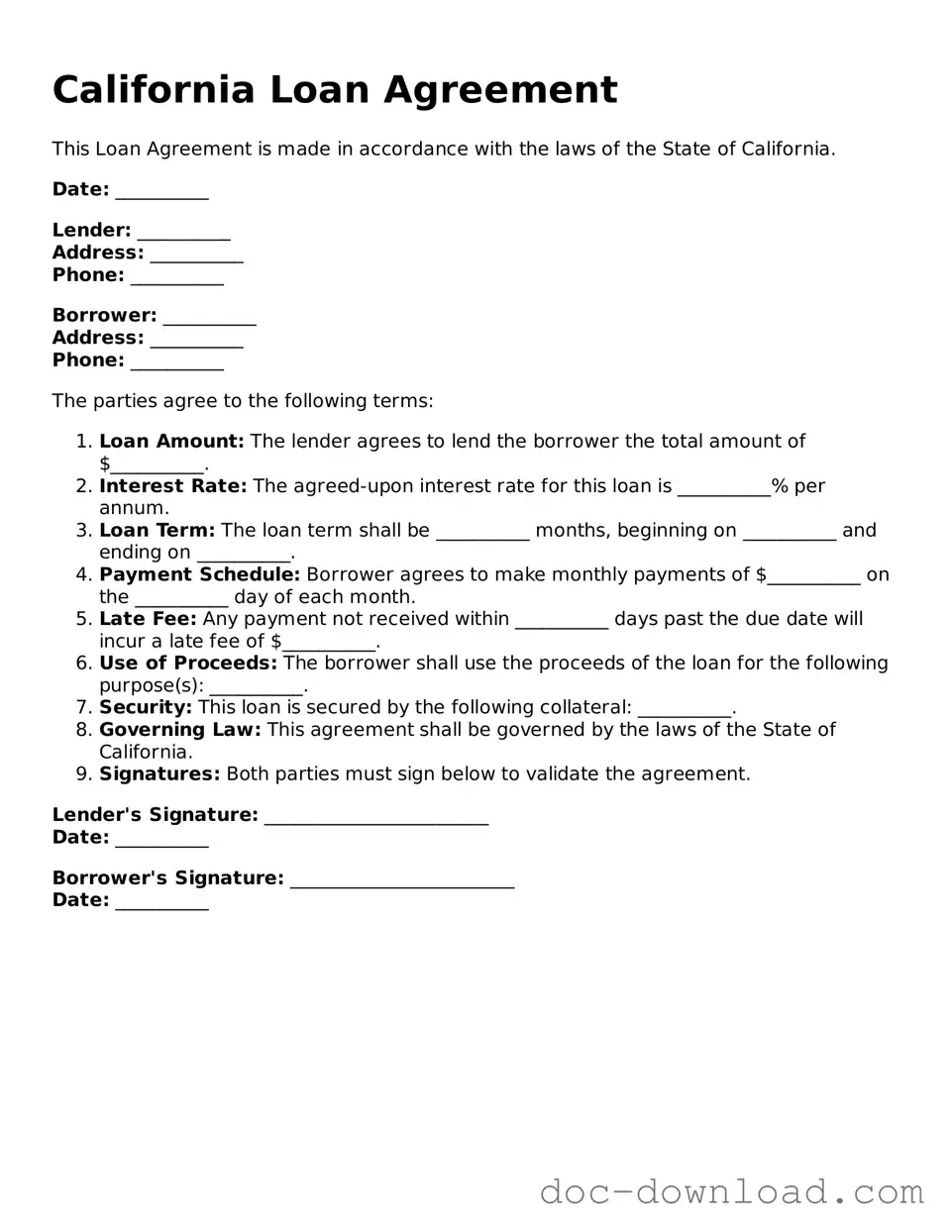The California Promissory Note serves a similar purpose to the Loan Agreement form. Both documents outline the terms of a loan, including the amount borrowed, interest rate, and repayment schedule. A Promissory Note is often simpler and focuses primarily on the borrower's promise to repay the loan, while the Loan Agreement may include additional details such as collateral and specific conditions for default.
The Quitclaim Deed is essential for those looking to transfer property interests without the complexities of validating a title. In Indiana, property owners can utilize this straightforward legal document to convey their share to another party, often involving familial situations. To assist in this process, you can access a useful resource at https://quitclaimdeedtemplate.com/indiana-quitclaim-deed-template/ which provides templates and guidance specific to Indiana's requirements.
The Security Agreement is another document that aligns closely with the Loan Agreement. This document is used when a borrower pledges collateral to secure a loan. Like the Loan Agreement, it specifies the terms of the loan but also details the rights of the lender in case of default, providing an extra layer of protection for the lender.
A Mortgage Agreement shares similarities with the Loan Agreement, particularly in real estate transactions. Both documents outline the loan terms and conditions, but a Mortgage Agreement specifically secures the loan with the property itself. This means that if the borrower defaults, the lender can initiate foreclosure proceedings to recover the loan amount through the sale of the property.
The Deed of Trust is closely related to the Mortgage Agreement and serves a similar function. It involves three parties: the borrower, the lender, and a trustee. Like the Loan Agreement, it lays out the terms of the loan but includes provisions for the trustee to hold the title to the property until the loan is repaid. This structure can simplify the foreclosure process for lenders.
A Loan Application is another document that relates to the Loan Agreement. While the Loan Agreement details the terms of the loan after approval, the Loan Application is the initial request for funds. It collects essential information about the borrower’s financial status, credit history, and purpose of the loan, helping lenders decide whether to approve the loan.
The Loan Disclosure Statement is also similar to the Loan Agreement, as it provides crucial information about the loan’s terms. This document is typically required by law and must be provided to borrowers before they sign the Loan Agreement. It includes details about the loan amount, interest rate, fees, and other costs, ensuring borrowers understand their obligations.
The Personal Guarantee form is relevant when a business borrows money. It requires an individual, usually a business owner, to guarantee repayment of the loan personally. While the Loan Agreement outlines the loan's terms, the Personal Guarantee adds an additional layer of security for the lender by holding an individual responsible for the debt.
An Installment Agreement can also be compared to the Loan Agreement. This document outlines a payment plan for a loan, specifying how much the borrower will pay and when. While the Loan Agreement sets the overall terms of the loan, the Installment Agreement focuses on the repayment structure, often breaking down payments into manageable amounts over time.
Finally, the Forbearance Agreement is similar in that it addresses the repayment of a loan, but it is used when a borrower is struggling to make payments. This document allows for temporary relief by modifying the loan terms, such as reducing payments or extending the repayment period. Both the Forbearance Agreement and Loan Agreement are crucial in managing loan obligations, especially during financial hardship.
